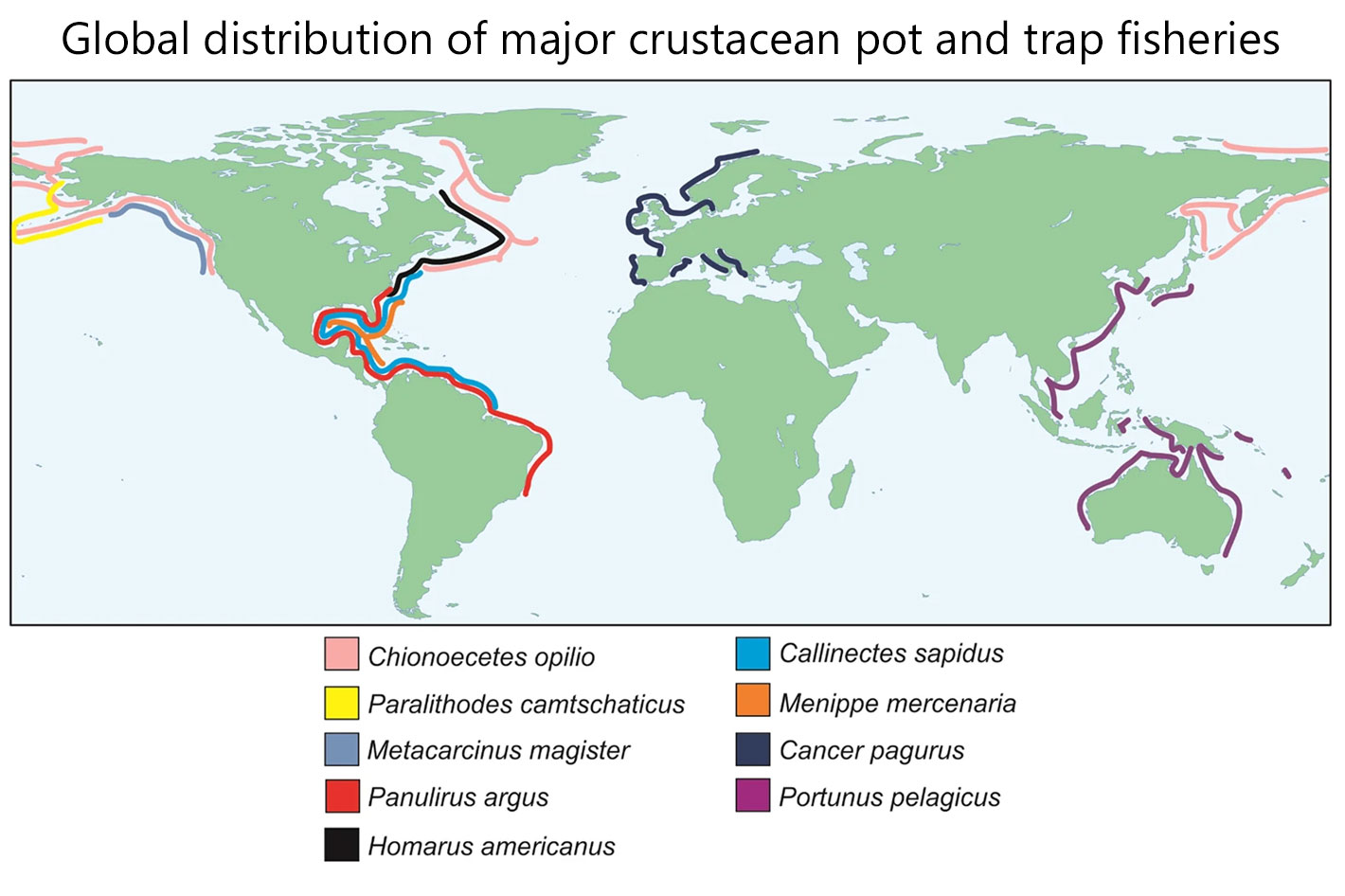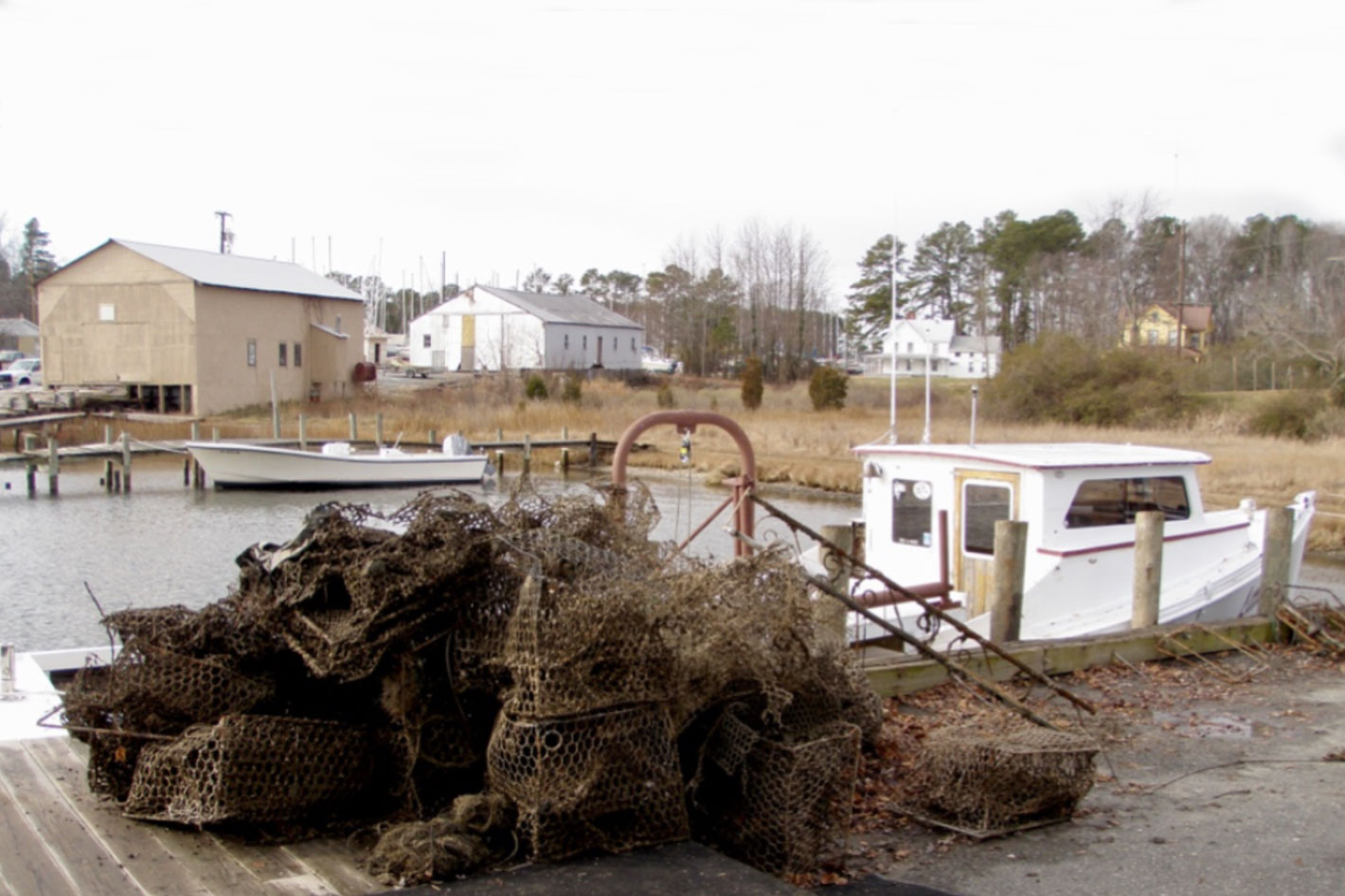NOAA chose William & Mary’s Virginia Institute of Marine Science to lead a new national program focused on protecting U.S. coastal waters from derelict fishing gear.
The $8 million provided by the National Oceanic and Atmospheric Administration to implement the four-year program is the largest single grant award in VIMS’ 83-year history. Many of these dollars will be passed on to program partners through an annual grant competition. Formally known as the Nationwide Fishing TRAP Program – “TRAP” for Trap Removal, Assessment & Prevention – the effort includes funding for commercial and tribal fishers to remove derelict pots from Virginia’s waters.
The TRAP Program will fund removal of the pots and traps used to harvest crabs and lobsters and establish a Derelict Trap Policy Innovation Lab to synthesize the collected data to inform prevention and mitigation policies at the state and federal levels.
Derelict gear refers to fishing equipment that has been lost, abandoned, or otherwise discarded in the water, commonly due to storms and boat traffic. It can harm ecosystems and economies by trapping and killing targeted and bycatch species, damaging marine habitats, and competing with actively fished gear.
Removal of derelict fishing gear has major economic impact beyond what some would believe, revealed a study… from 2016. The effort to find and remove derelict crab pots from lower Chesapeake Bay waters ran from 2008 to 2014, a six-year program that generated more than $20 million in harvest value for area watermen.
The study shows that the collaborative efforts to remove ghost crab pots from the lower Bay led to an additional 13,504 metric tons in harvest valued at $21.3 million – a 27% increase above that which would have occurred had the pots stayed in place.
The study’s lead author, Andrew Scheld, an assistant professor at Virginia Institute of Marine Science, said then: “it’s well known that derelict fishing gear can harm the environment and increase crab mortality, but the economic impacts of this ‘ghost fishing’ have rarely been quantified.”
The study, published in Scientific Reports, an online, open-access journal from the publishers of Nature, was co-authored by VIMS professors Donna Bilkovic and Kirk Havens.
 Standardizing trap-removal data
Standardizing trap-removal data
Recognizing that derelict gear is a problem that extends far beyond Chesapeake Bay, the researchers also applied their methodology to estimate the economic benefits of removing derelict crab pots and lobster traps on a global basis. This analysis showed that removal of even 10% of derelict pots and traps from major crustacean fisheries—the percentage of the Bay’s derelict pots they estimate were removed by the VIMS program—could increase landings by 293,929 metric tons, at a value of $831 million annually. That is where the new program comes in: standardizing trap-removal data will help address issue from Maine to Alaska.
“By coordinating the removal of derelict traps nationwide, we can leverage our experience and expertise to benefit coastal ecosystems and economies from Maine to Alaska,” said Kirk Havens, director of the Center for Coastal Resources Management (CCRM) at VIMS.
The TRAP program will initially focus on the gear used to catch crabs (blue, Dungeness and stone) and lobsters (American and spiny). According to Andrew Scheld, a fisheries economist at VIMS, these trap and pot fisheries bring in more than $1 billion per year, almost 20% of the total annual landings value of all U.S. fisheries. As the TRAP program develops, it may expand to additional species captured using these two gear types.
“There have been many excellent efforts to deal with derelict fishing gear in U.S. waters, but to address the issue most effectively, it’s critical that these efforts are coordinated and standardized at a national scale,” said Donna Bilkovic , CCRM assistant director. “That will allow us to determine where the gear is coming from and where it’s ending up, to accurately assess its ecological and economic impacts and to recognize high-use conflict areas. This is information that can ultimately help us develop effective prevention measures.”
The TRAP program will operate under the auspices of the NOAA Marine Debris Program and the best management practices of its Derelict Fishing Gear Assessment Framework. TRAP staff will engage with existing gear-removal partners to develop standard sampling protocols.







